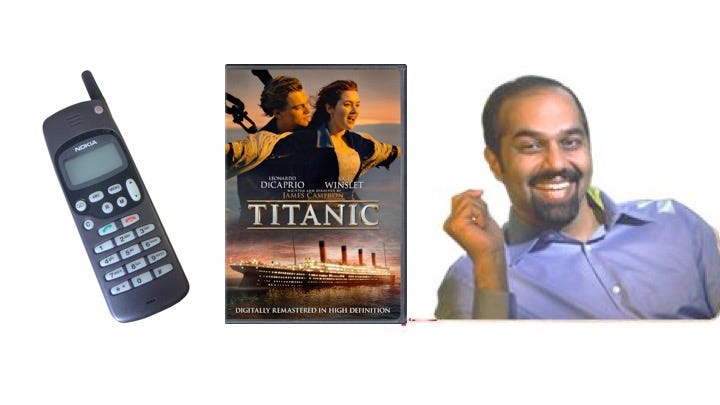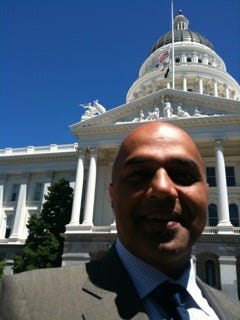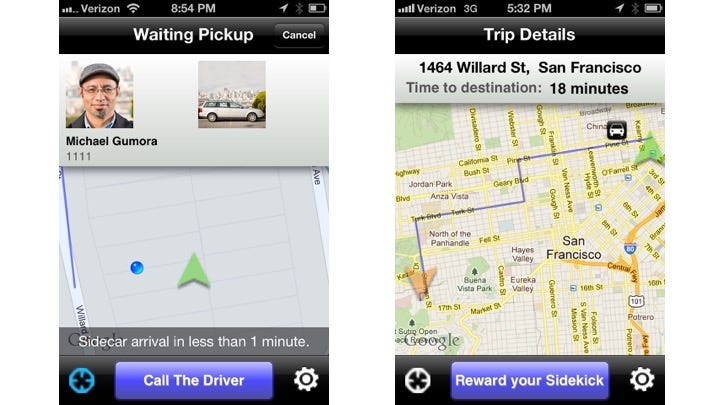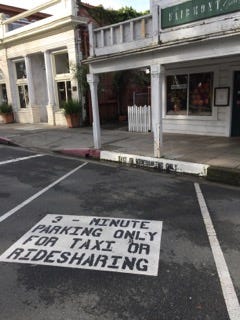
I like to reflect on what surprised us most over the year. It helps me understand conventional wisdom and the surprises that upset it… helpful if you want to defy conventional wisdom and be all disrupty & stuff.
1. Bitcoin Bites Back
Conventional wisdom last year: Blockchain is important but cryptocurrencies like bitcoin, not so much. Banks and other institutions will be the first to deploy blockchain technology.
Conventional wisdom now: What the hell just happened? Should I buy bitcoin or short it? This is like the dotcom bubble!
What happened: Bitcoin, Etherium and other cryptocurrencies had a run up in value like nothing we’ve ever seen. It makes the dotcom bubble of the 90s look quaint. Most notable so far is block.one, a blockchain startup that has raised $700 million and plans to continue to raise over $1 billion. The company has a beta product, consists of about 50 people in a distributed team that formed over the last 18 months. Unlike traditional startups, block.one didn’t sell equity shares in the company. They sold a cryptocurrency, called EOS, in an initial coin offering (ICO). By one estimate there were 1,500 ICOs in 2017. The total value of cryptocurrencies including bitcoin is worth over 30 times the value in January of 2017.
Oh, and the banks and other established companies? Turns out — surprise! — that big companies have already dealt with the problems blockchains solve. To be a good candidate to use blockchain you need to have a problem that requires of immutability of data, distributed operations, and lower transaction costs or coordination costs. If you don’t need all three, you probably don’t need blockchain. This new world will be built by startups, not banks. Right now, startups are racing to build the infrastructure to allow even more startups to build apps on blockchains.
Surprise in 2018? Conventional wisdom is looking to the 1990s dotcom playbook. A crash or further mania will be met with a chorus of “I told you so!” The biggest surprise would be price stability. It would be mind bending if the most popular cryptocurrency next year was a reliable, stably priced cryptocurrency, avoiding the dotcom bubble trap. A really easy to use, consumer-friendly version of a cryptocurrency would also be a surprise. Imagine cryptokitties but useful and easy. Another surprise could be a vulnerability in bitcoin or a quantum computer breakthrough that makes blockchains more vulnerable.
All hard to imagine in 2018, but not impossible.
2. 126 million Americans — Really?
Conventional wisdom last year: Facebook, Twitter and internet media are powerful political media. The Russians were involved in the DNC email hack. The two facts aren’t very connected and if are, it’s in an incidental way.
Conventional wisdom today: The Russians swung the election against Clinton and it might have been the decisive blow. They used social media, fake news, and hacking to do it.
What happened: When I first heard the Russians spent a few hundred thousand on Facebook ads, I admit I shrugged. Yes, it shouldn’t have happened, but it was a tiny amount in the grand scheme of things. Then came the revelations that as many as 126 million Americans were exposed to the ads and their viral effects — surely one of the most cost-effective ad spends ever.
We realized last year that our democracy & cohesion of our nation is at risk from the structure of the new media. Its not just about fake news. Its not just about cybersecurity. Our new tools can literally help tear our nation apart. 2017 was like a slow motion 9–11, realizing how some evil bastards used our own technology against us.
Surprise in 2018? It is possible the involvement of Russia goes much deeper than we know. Investigation by the FBI and Congress will reveal a lot this year and it could have surprises for how internet media is used to manipulate us. Also, this conversation goes beyond the Russians to our relationship with internet media. What if Facebook is right and the answer is more media engagement, not less?
3. #MeToo and Women’s Cultural Moment
Conventional wisdom last year: Silicon valley culture is mostly a meritocracy. We’re not really sure why women CEOs don’t get funded as much — maybe it’s their fault.
Conventional wisdom now: Silicon valley is mostly a meritocracy if you are a twenty-something male engineer — even better if you wear a hoodie and look like Zuck. If you’re female … wait, shit, were you hit on by VCs? We gotta do something about this!
What happened: In mid 2017 we were surprised that some slimeball VCs used their power to harass and assault women seeking funding and jobs. It shocked the industry and exposed the lack of process for vetting sexual harassment. We had a wave of resignations and the shuttering of at least one VC fund.
Just months later, similar allegations emerged in Hollywood and politics, but with much, much higher profile. We were reminded that, despite the rise of internet media (see #2 above), our culture still depends more on mass media created by Hollywood and politicians. They were the ones that created the awareness that generated a public groundswell demanding resignations and real change.
Surprise in 2018? I know its cynical, but a surprise would be real, meaningful, structural reform among venture capitalists. I fear that, like past cultural moments for women (remember Anita Hill and the year of the woman?), there will be serious backsliding in 2018. There doesn’t seem to be any organization behind #metoo and it will likely wither like the #occupy movement. We need to keep the pressure up in the tech community to implement changes like those suggested by Reid Hoffman and support SB244. That bill adds “investor” to the list of non-employee relationship with protections against sexual harassment. That list already includes teachers, landlords, lawyers, and social workers. Seems a minor thing to add “investor,” yet this bill has not made much progress since August when it was introduced.
4. Tech Turns Evil
Conventional wisdom last year: The technology industry is the darling of America. We might have some blemishes, but they are growing pains.
Conventional wisdom now: The tech industry is a source of many of the ills of society and the future is even more dire.
What happened: This was a year when the tech industry went from darling to demon. We are, in the darkest view, misogynists and racists who won’t hire or promote anyone who doesn’t look like us; monopolists who need to be muzzled (the Fiercesome Five); scofflaws (Uber, Bitcoin); left-wing overlords controlling the new medium (Facebook, Google, Twitter, Amazon); money-grubbing moguls who sell out our democracy for the sake of a scalable advertising system (Facebook, Twitter); con-artists (cryptocurrencies), and contributing to ills from unemployment, to teen suicide to low sperm count.
Here’s the thing. These criticisms are not all wrong.
As entrepreneurs and engineers we want to solve the problems. Monopolies? Let’s use a new platform like blockchain to tear them down. Screwed up media model that sells us to advertisers? Let’s reform it or remake it. Fake news? Let’s fix it. That’s all fine and good and lets keep doing it.
We also have to come to grips with the scale of impact technology is having on society. We are going to need more than just engineering solutions. Inside the industry, we need cultural change. And the big questions are for society, not just engineers, designers, and business people.
Unfortunately, the folks with levers of power in political society are not our fans. The president and many Republicans have their knives drawn. They might be supportive of being rich, but not for the things that made the tech industry rich in the first place: investment in government research, higher education, open trade, immigration & social diversity, helping small companies with capital (e.g. Small Business Admin role in early venture capital), and open access to networks (breaking up the Bells, net neutrality, local phone access).
Surprise in 2018? I see more opportunity for negative than positive. For all the press this year, it could get worse. What if company executives knew their service was harming people and did nothing or worse, covered it up in the interest of profit? It is what happened in the industries we love to hate: cigarettes, auto, oil, & pharmaceuticals. As bad as it was in 2017, it would be a surprise if we find infotech on that list. But it’s not impossible.
5. Peak Elon?
Conventional wisdom last year: Elon might be a genius, but he’s getting stretched thin with rockets, electric cars, and solar panels.
Conventional wisdom this year: Elon is a genius, but he’s getting stretched thin by rockets, electric cars, solar panels, … AND boring tunnels, hyper loop, trips to mars, and electric semi-trucks.
Elon Musk this year began mass production of an electric automobile and regular use of a rocket with vertical landing of its launch stage. He unveiled a new way to make tunnels, plans an electric semi-truck, and plans for the largest rocket ever conceived to take hundreds of people to Mars. Oh, and didn’t he launch some connect-your-brain-to-the-internet initiative too?
He has shown he can turn fantasies into reality, has received billions in financial backing, and revealed plans that would have made our heads explode five years ago — ok, admit it: the combination made our heads explode even this year. Hence, the reason it is one of the surprises of the year.
Surprise in 2018: It’s hard to imagine a similar combination of surprises in 2018 from Elon. A logical bet would be to say that no human can maintain focus on so many things and we have seen peak Elon this year. But logic wouldn’t have resulted in 2017 either.








